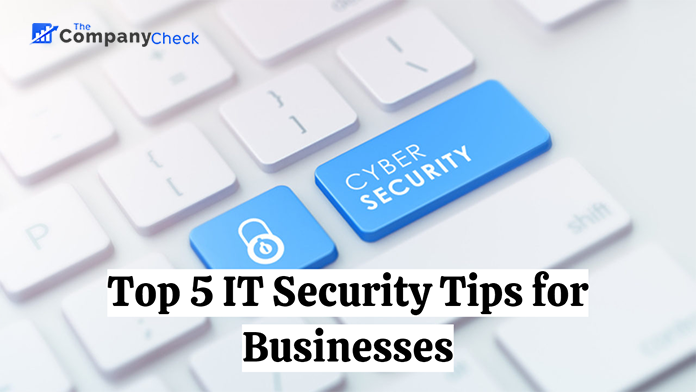Organizations and business pioneers in the IT space have been progressively raising issues about cybersecurity, raising probably the most widely common threats and gaps in IT security for organizations, to assist them with venturing up with the latest solutions.
With the worldwide switch to remote working, because of the Coronavirus pandemic, numerous associations were caught unprepared for the difficulties. PCs commonly come up short on the security levels that associations need as standard, which has left employees and organizations helpless against vindictive assaults. It makes sense that all is good and well to discuss the significance of IT security and remind organizations that it is fundamental to remain careful.
Top 5 IT Security Tips for Businesses
Here’s a list of Top 5 Tips for protecting your employees, your IT systems, and your organization as a whole.
Set up & Review Security Policies
Building up IT security policies is essential for all organizations, big or small. Having security strategies set up can guarantee that your organizations are solid and remain protected against threats. One of the main variables in security protocols is about handling sensitive data. Do your representatives know how to secure sensitive information or personally recognizable data? In the event that this isn’t clear, there’s a significant gap to take care of. Data protection must be a top priority for every business. As a feature of security policies, organizations ought to likewise have arrangements for utilizing IT disaster recovery services if there should arise an occurrence of any incidents.
Perform Security Audits
An IT security audit incorporates two distinct assessments. The manual assessment happens when an internal or external IT security auditor interviews workers, reviews access controls, analyzes physical access to hardware, and performs vulnerability scans. These reviews should occur, at the very least, yearly. Some organizations, however, prefer to do them more frequently. Associations ought to likewise review system generated reports. Automated assessments not only incorporate the data, yet in addition react to software monitoring reports and changes to server and file settings. Cybersecurity audits usually take a deep look at the current system setup for a business, to identify weaknesses and detect potential risks. For security measures, to be viable, they need to go in accordance with the requirements of each organization. Each business is extraordinary, so their cybersecurity requirements must react to their particular methods of working.
Update your IT Systems and Software Regularly
Updating IT systems and software is truly significant and it’s a task that should be prioritized. Cyber Attacks are continually advancing and getting more refined, and hackers are continually searching for better approaches to attack your IT systems. In this way, it’s crucial that business owners keep steady over the risks. PC programming and systems are continually making updates available to make their applications stronger. Staying aware of the updates is important for paying attention to your IT systems seriously. Updates will assist you with avoiding bugs and gaps and keep your systems fit as a fiddle, more ready against hazards.
Train Your Staff
Training your team to be aware of cybersecurity and potential dangers helps protects your company and its resources. Things like realizing how to identify phishing emails or keeping mailboxes secure may appear to be fundamental steps, but the truth is that not everyone has the knowledge or understands some of the most basic security measures. Cybercriminals depend on human mistakes to get to IT systems and cause harm. In numerous cases, organizations don’t train workers appropriately against expected dangers. At the point when workers aren’t careful, can leave systems vulnerable to attacks. Sufficient Training for your team should cover the rudiments of how to set up and keep their passwords secure and ensured, and train them about the dangers of tapping on dubious connections or phishing emails.
Get An Incident Response Plan
Organizations should have provisions for disaster recovery in place. This can be especially important for small businesses. An incident response strategy should outline what an organization needs to do in case of an attack. Employees should know about acceptable behavior and what steps to follow if things turn out badly. IT groups must be answerable for conducting tests that show the response to different cyber attacks – and incorporate IT disaster recovery services as a center part of the plan. Ensure your IT partner works intimately with you to locate the best solution for your particular targets, and in accordance with your budget
For more information, visit the website of The Companycheck



